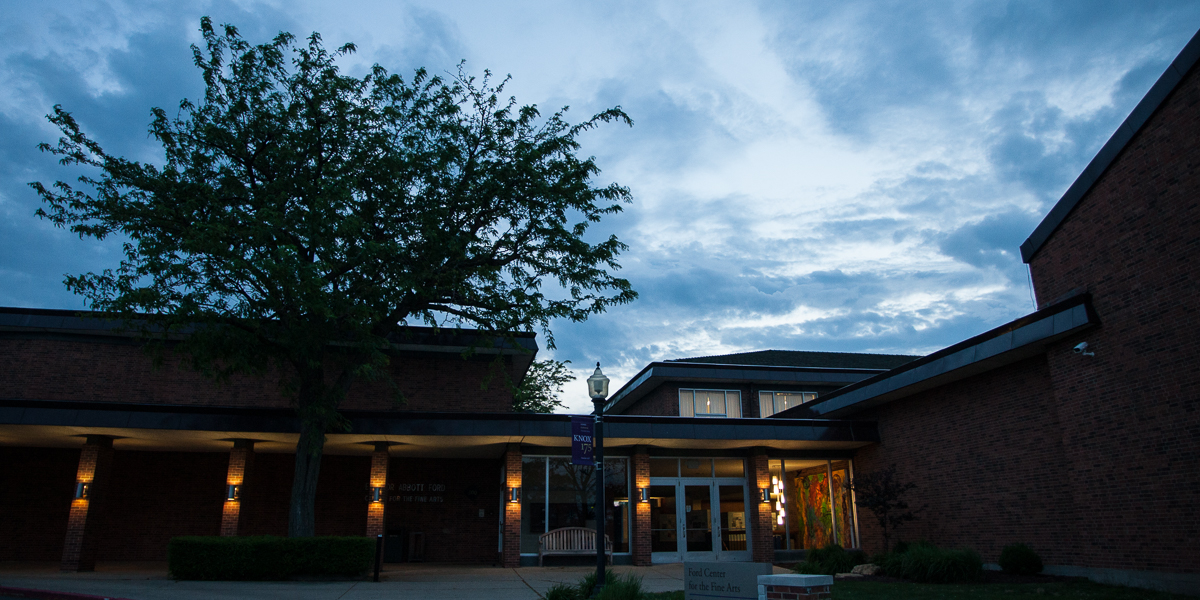

Venture Boldly


Any undergraduate student, regardless of area of study, is welcome to present on a topic related to the theme of the conference. We welcome the breadth of undergraduate experience, from students presenting work done in previous courses to students sharing original research projects. If you are wondering if your idea or project would be a good fit for this conference, reach out to a faculty mentor and ask! You can also email Scott Harris saharris@knox.edu with any questions.
If your presentation is derived from a class paper or project, you should consider reaching out to that instructor for any feedback about adopting it for a conference. Asking for feedback or comments on your presentation (or even on your idea in general) will provide a space to workshop ideas. When submitting your proposal, you should note this faculty member as your mentor.
No. Your mentor is not asked to approve your presentation. But please do consider inviting your mentor to attend the conference–and at least let them know if your paper gets accepted!
Knox College is located in Galesburg, IL and is easily accessible by car and Amtrak trains. Please visit https://www.knox.edu/about-knox/visitor-information/getting-to-knox for additional transportation details.
The conference has a hotel block reserved at the Holiday Inn Express Galesburg. Mention that you are with the “Undergraduate Research Conference” to get the bloc rate. Bloc rooms are available on a first-come, first-served basis.
Galesburg also has several hotels and vacation rental properties that are very reasonable. You can find a list of accommodations here https://www.knox.edu/about-knox/visitor-information/accommodations.
Individuals should prepare a 12-minute presentation and be ready for roughly 3-5 minutes of Q&A from the audience. A faculty moderator will be in the room to help facilitate the Q&A after each presentation.
The options are only limited by your creativity! While it may not be possible to stage an entire dance performance, we welcome presentations that make use of video recordings to show your creative work. You may also consider a dramatic reading (for example, a table reading of an excerpt from a play could constitute a “pre-arranged panel”). You may also consider presenting images of your own visual art. Specific questions about creative or non-traditional presentations can be addressed to Scott Harris at saharris@knox.edu.
Reading your paper
At many academic conferences, especially in the humanities, presenters will read their paper verbatim. This has the advantage of being very well organized and thorough. If you are comfortable reading your paper, be sure to practice reading it out loud before the conference!
Presenting from slides or notes
Rather than reading a paper verbatim, many students present from slides and a script or notes. Most students will use Google Slides or PowerPoint to create a presentation. You are welcome to incorporate a mix of text, pictures, graphics, etc. to these slides -whatever you wish. Convert your slide deck to a PDF before submitting to the conference.
Remember that the time limit is 12 minutes. Also, keep in mind that you should have notes prepared to accompany your slides -- do not read directly from your slides during your presentation!
Video
If you wish to create a slide deck that incorporates video (for dance, art, or other visual arts projects), make sure that your presentation is created in Google Slides first. Upload the video (under Insert in the menu bar) and then save the entire presentation as a PDF. This will save the video as a clickable link within your PDF presentation. On the day of the event, you will scroll through your slides and when you get to the video slide, you will click on the image to bring up the video.
Make sure to account for the length of the video(s) in your overall time limit (12 minutes). Also, keep in mind that you should have notes prepared to accompany your slides -- do not read directly from your slides during your presentation!
The typical organization for an academic presentation varies by discipline, but the below is a good guideline. This is a great opportunity to discuss your project with your faculty sponsor. Here is an example from the social sciences to give you an idea:
Introduction - you, faculty mentor(s), funding source (if any), title of project
Hook - get us interested in what you will say
Research Question - what problem or issue did you study and why does it matter?
Methodology - how did you go about investigating this question?
Background/Literature Review - what have other people said about this?
Discussion of Data/Results - share the most important things you found out or learned. Note: If your project is still in-progress, you can share what results you expect to find and/or what you have learned thus far
Analysis - what else should be done, or how could this be applied to other work?
Conclusion - summarize very briefly what you said
You should always practice your presentation in full a few times. You might feel silly delivering your presentation to your cat or your roommate, but you need to do it and do it again. Practice to ensure that your presentation fits within the time parameters and that it flows. Also remember to prepare for the Q&A! What questions might you receive? Think those through and how you would answer them.
Be sure you meet with your faculty sponsor to go over your paper or presentation—ask for feedback before you need to submit your final presentation!